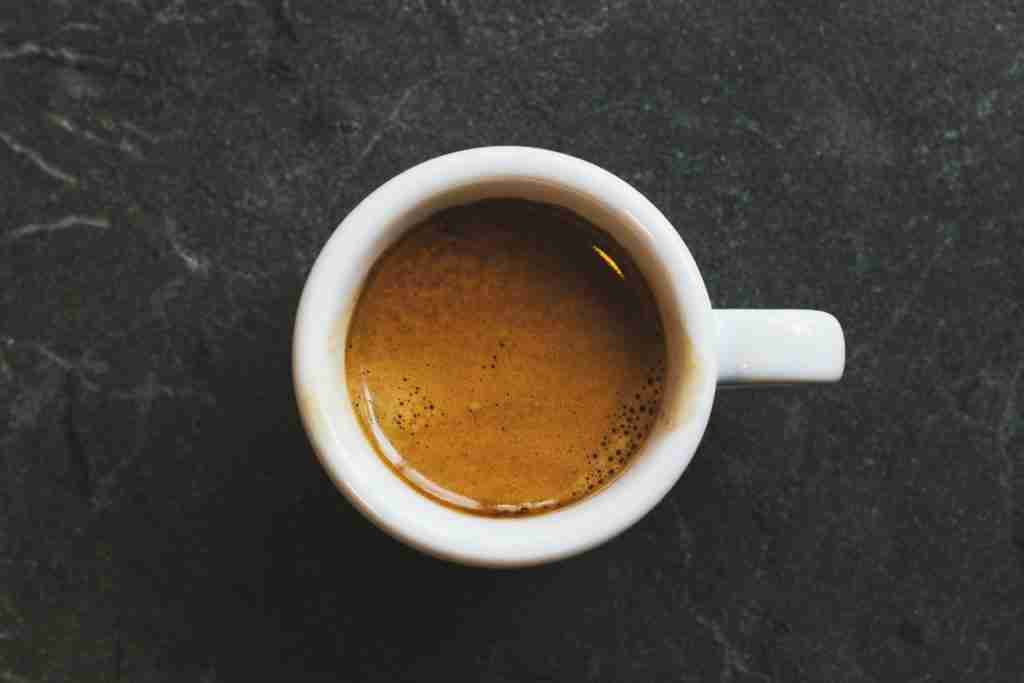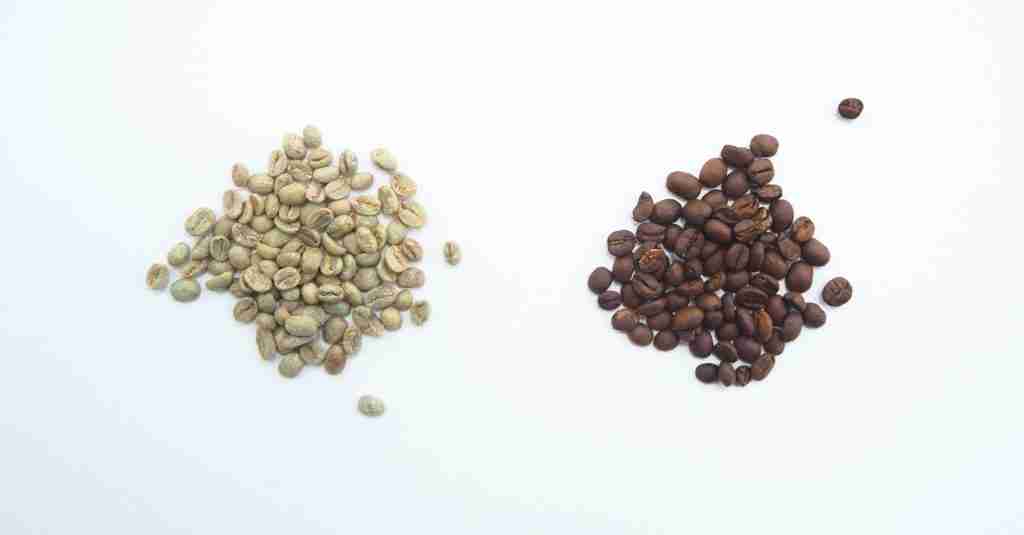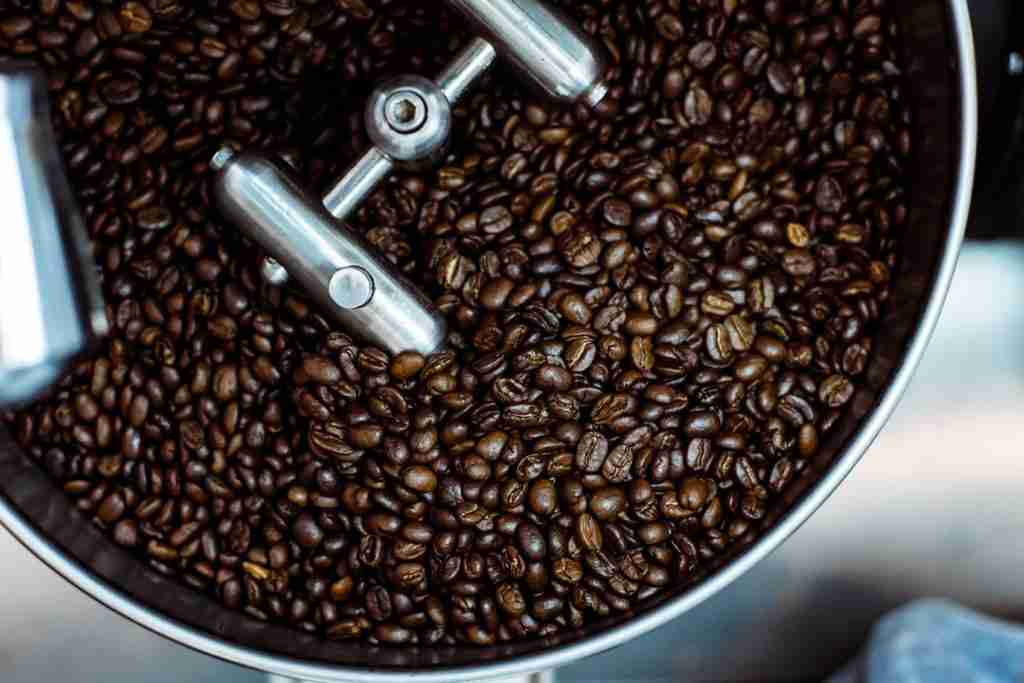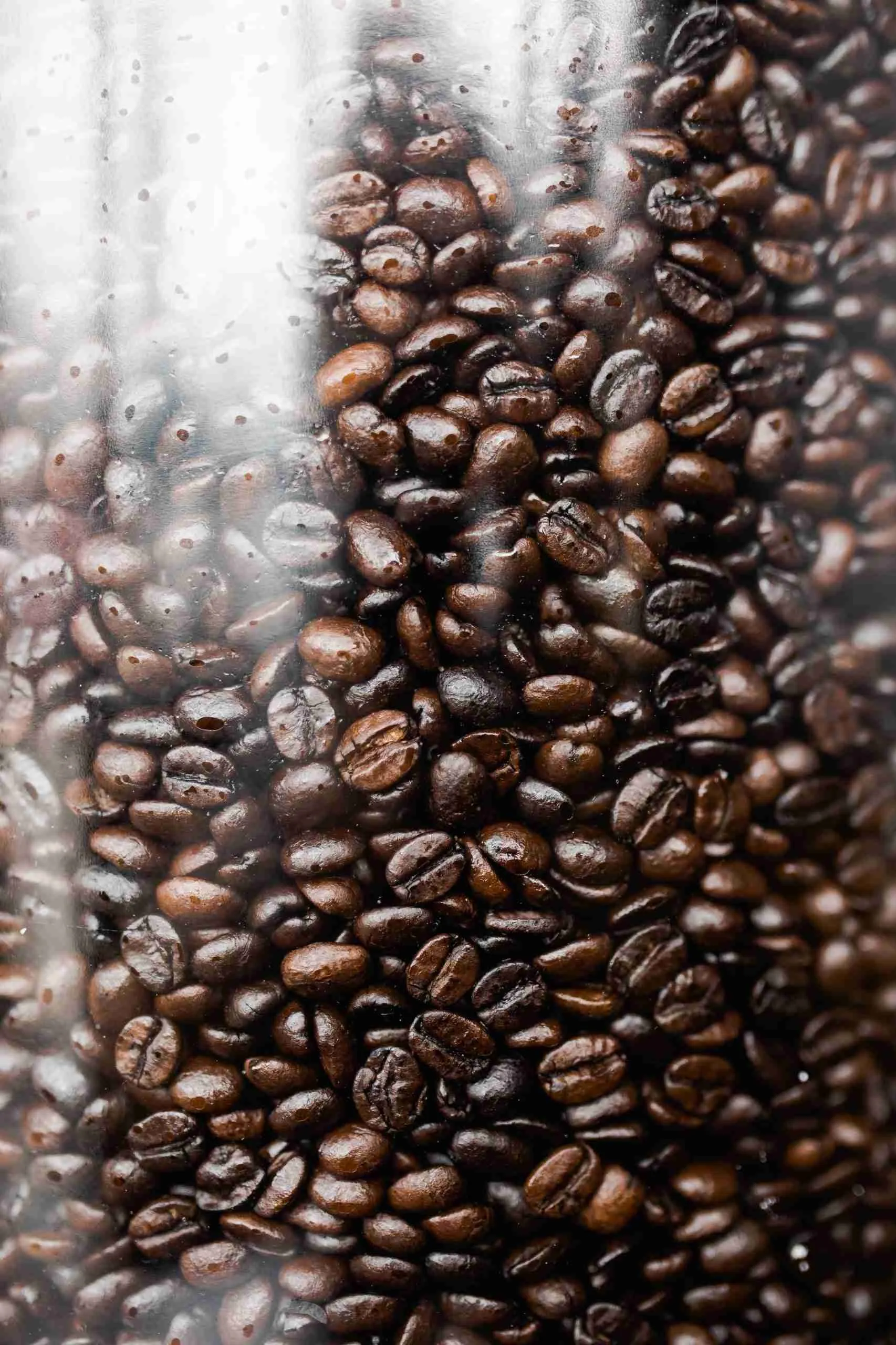
If you’ve seen dark roasted coffee beans that look shiny or like they’re covered with some sort of oil and wondered what it is, then you’re in the right place. Every coffee bean is different and some may be more oily than others, but it is a natural process that happens to all coffee beans. This “shine” on coffee beans is a type of oil that is naturally contained within the bean.
Coffee beans become oily because lipids from within the bean come to the surface as oil when roasted. This usually happens to dark roasted beans and more of these lipids can seep out of the beans the longer they are roasted.
In this article, I will explain where the oil on coffee beans and what it means about your coffee beans. There may be a few things to look out for when you see oil on your coffee beans.
What does Oily Coffee Beans mean for your Brew?
Have you seen the crema on a good shot of espresso before? That is a good example of what coffee oil is and what it does for your coffee.

Crema is an example of what happens when the coffee oils are inside your coffee beans, but what if they’re released before you brew your coffee?
Coffee is a nuanced and refined beverage so there usually isn’t a sweeping answer for what oily coffee beans mean. You may even hear conflicting answers like “oily coffee beans aren’t fresh” or “oily beans are a sign of old and stale beans”. However, this is because everyone’s palates are different and some may prefer some flavors over others.
As a rule of thumb, if you see medium or light roasted coffee beans with a thick layer of oil on them you should typically stay away.
These oils should be released from the bean from a longer roasting time and a light or medium roast is not long enough to release these oils.
We can then deduce that those light or medium roasted beans with a layer of oil may be older beans or may have been stored in an improper container resulting in the oil.
Read about how you can properly store your beans here. If you’re seeing this oil on dark roasted beans, it is natural and does not mean those beans are oil or have been stored incorrectly.
Oily coffee beans are a result of a chemical reaction that occurs when the coffee bean meets oxygen. This usually happens more with darker roasts as the internal shell protecting the coffee bean gets damaged by the heat.
Darker roasts lose their flavor faster and usually have more oil on them because the shell gets damaged. However, every bean will eventually develop this oily sheen on top of the bean if they are left out exposed to oxygen enough.
Properly roasted beans, even dark roasted ones shouldn’t have an oily layer on the surface until a few weeks. So don’t worry your coffee is safe as long as you’re buying fresh coffee every few weeks.
Oily beans can also become sticky and clog your coffee or espresso machine. Over time this oil can build up to become a gummy sticky mess that is very hard to clean up. It can also cause grounds to clump up and stick together to prevent proper extraction.
How to tell if your Coffee Beans are Oily
The easiest way to tell if your coffee beans are oily is to use your hands. Touch your beans and feel if there is any residue that is leftover on your hand. Some beans may even feel a bit sticky!

Lighter roasts usually don’t have any residue but you can also check the inside of your coffee bag. Sometimes the inside of your bag can be oily as well due to the coffee beans.
Roast levels are usually based on your personal preference but freshness is something every coffee drinker should enjoy.
Here are the guidelines you should follow when looking to purchase new beans:
- For light roasts if there is any oil on top of the bean they have been sitting for too long and you should stay away.
- For medium roasts the same rule applies. Medium roasted coffees should usually not have any oils on them.
- For dark roasts such as French or Italian roasts you can expect them to be a bit oily so you’ll be drinking these beans for the roasted flavors rather than the bean’s flavor profile. For these beans try to pick beans that aren’t sticky.
Chemisty Within the Coffee Bean
There are hundreds of chemicals that go into making a cup of coffee that we all enjoy. All of these chemicals are stored within the coffee bean, which is actually a seed of a coffee cherry.

Like many seeds, coffee beans are protecting carbohydrates, amino acids, water, caffeine, and lipids. This goodness packed inside the coffee bean is usually used to help a new coffee plant grow if the seed is planted. However, when the bean is roasted and run over hot water these chemicals come together to create the drink we know as coffee.
Separately these chemicals can taste horrendous. Caffeine for example is a water-soluble chemical that alone tastes terrible. Caffeine actually just tastes bitter on its own, and not in the good coffee way.
Pure caffeine is actually unpalatable and too bitter to swallow.
When heated these chemicals get activated during the roasting process and make magic happen.
Why Beans get Oily During Roasting
Coffee beans change dramatically during the roasting process. A lot of people don’t know that coffee beans start off as a green, pale almost colorless seed because they are so used to seeing the roasted version.
The beans change color due to the heat of roasting, but this isn’t just a normal browning. The amino acids and sugars that are usually inside the bean undergo the Maillard reaction and transform chemically to produce the flavors we know and love.

Any moisture inside the bean also gets turned into steam and tries to escape the bean. This usually builds up in pressure inside the bean until there is a “crack” that is heard. This is the bean’s internal shell breaking apart.
This exposes the inside of the bean called the endosperm. This layer inside the bean is semi-porous and as a result, the coffee oils from within the bean can escape to the surface.
This is why dark roasted beans tend to get oilily faster than lighter roasted beans. Dark roasted beans are roasted to the second crack. This means the internal shell of the coffee bean is even more exposed now and damaged by the heat.
The more damaged the internal shell is the more oil escapes to the surface.
Conclusion
Some people may think that the shiny appearance of a dark roasted coffee bean is a good indication of good coffee. Do not let your eyes deceive you. Sometimes the best coffee isn’t to a shiny oily bean that catches your eye, but an inconspicuous matte bean.
Oily on beans isn’t a good judge for what the best coffee beans are, but they give you a good idea of quality for lightly roasted beans and are usually is a good indicator of freshness.
Keep these tips in mind the next time you’re shopping around for your coffee beans!

